10 Days 9 Nights
Daily Tour
50 people
___
| Semi Deluxe | ||
|---|---|---|
| ADULT | CHILD | INFANT |
| ₹54,499.00 | ₹0.00 | ₹0.00 |
| Deluxe | ||
| ADULT | CHILD | INFANT |
| ₹56,999.00 | ₹0.00 | ₹0.00 |
| Super Deluxe | ||
| ADULT | CHILD | INFANT |
| ₹63,499.00 | ₹0.00 | ₹0.00 |
| Luxury | ||
| ADULT | CHILD | INFANT |
| ₹117,999.00 | ₹0.00 | ₹0.00 |
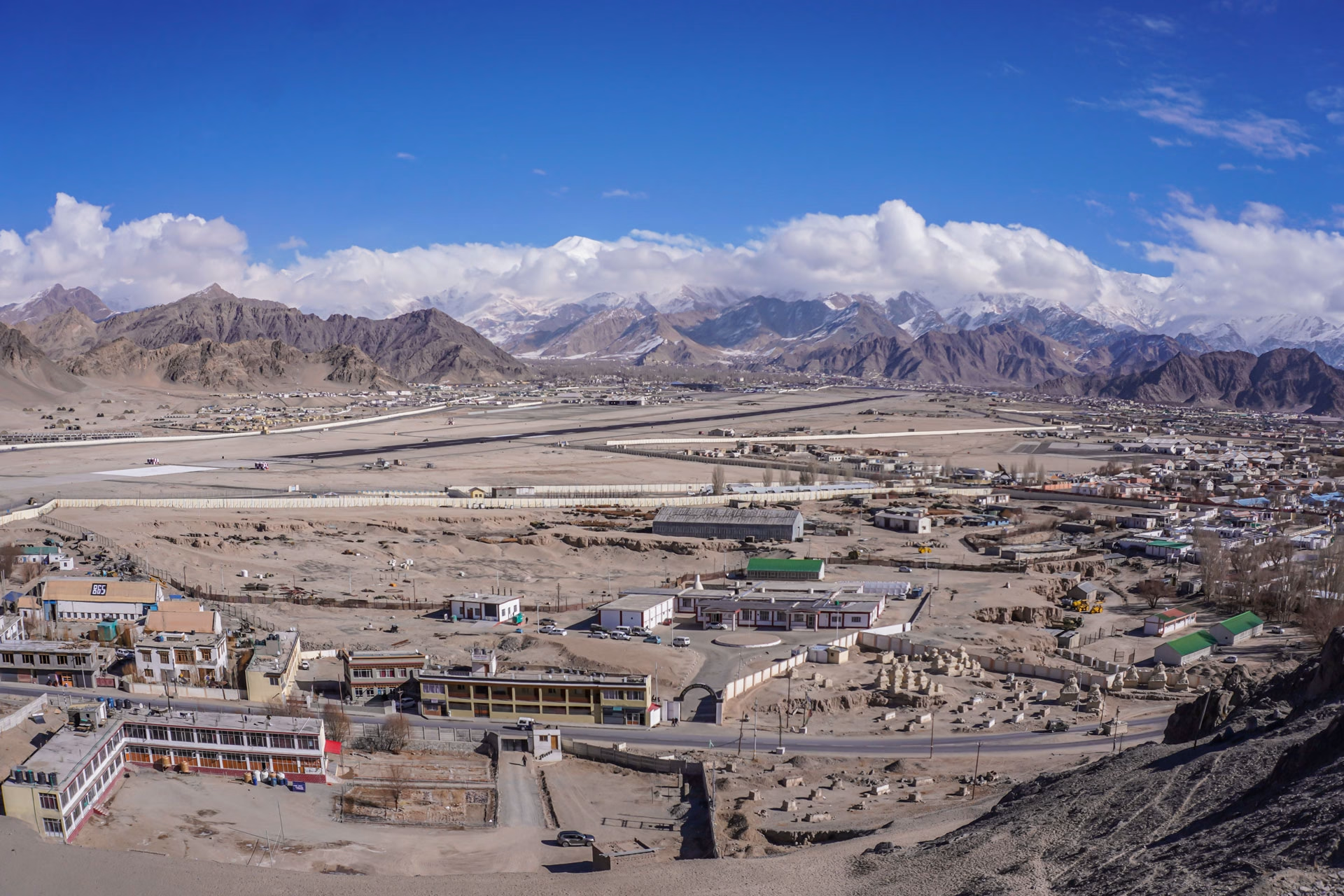
Altitude: 3500 m
You will be picked up in a cab from the airport and then check into your hotel in Leh. Spend the rest of the day resting and acclimatising to the high altitude to prepare for the journey ahead.
Meals: Dinner Night: Stay at the hotel in Leh
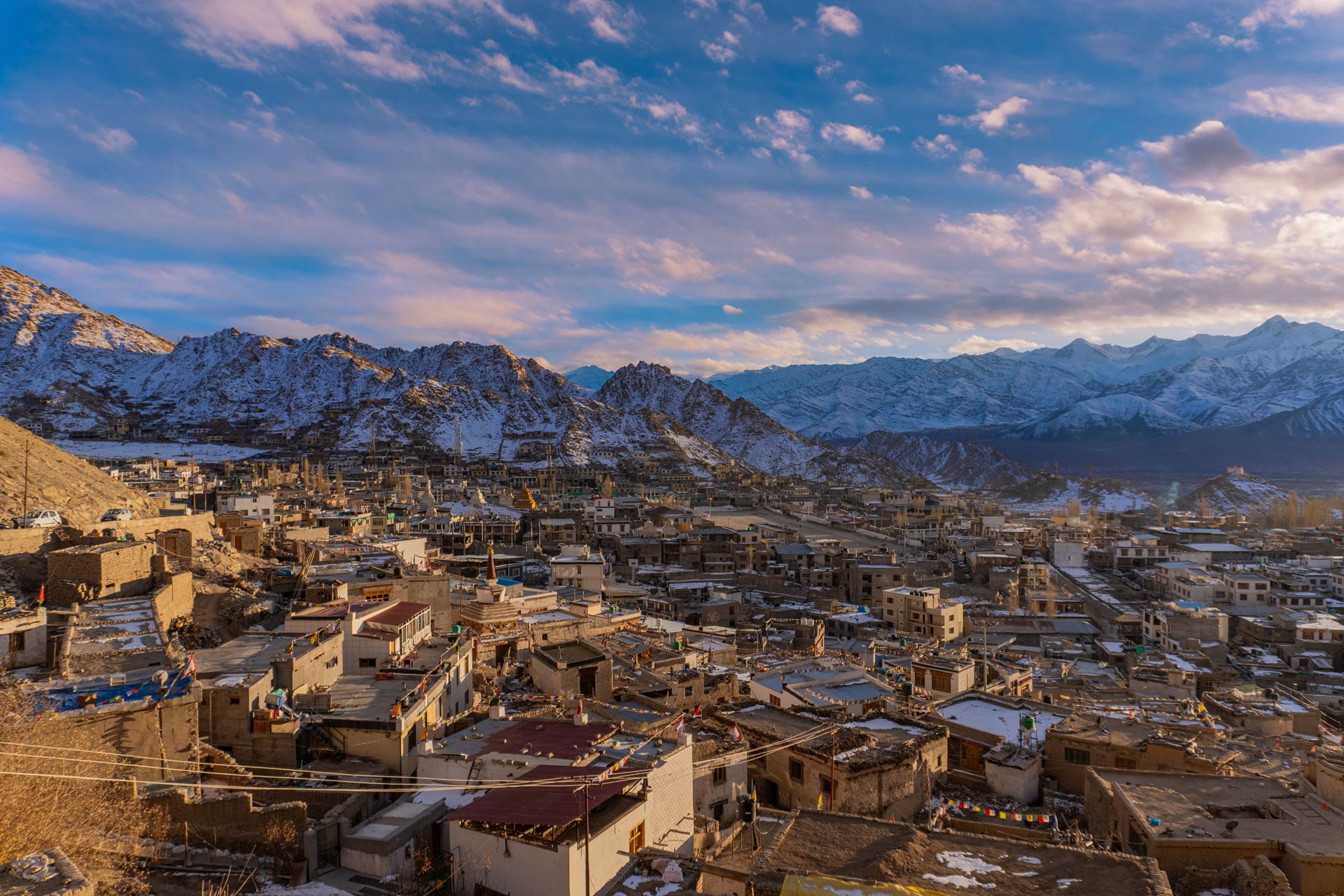
Dist: 70 km to 90 km | Altitude: 3300 m to 2600 m.
After breakfast, you will explore the local attractions of Leh, including the Leh Palace, Shanti Stupa, Hall of Fame, Spituk Monastery, Gurudwara, Magnetic Hill, Sangam, and Rafting Point. In the evening, you will return to your accommodation and relax.
Meals: Breakfast, Dinner
Night: Stay at the hotel in Leh
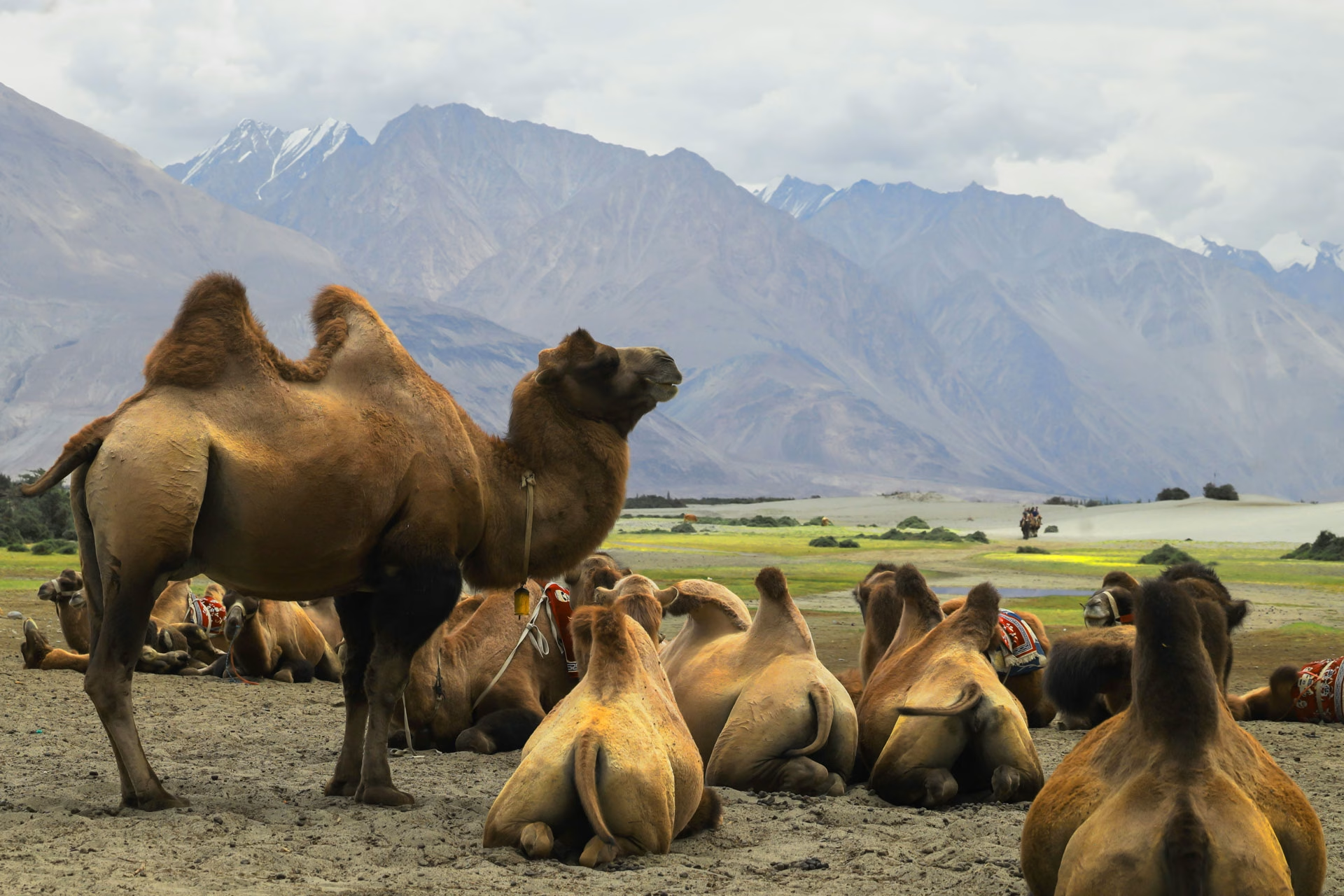
Dist: 160 km | Altitude: 3500 m to 5354 m to 3048 m
After breakfast, you will head towards Nubra Valley via one of the highest motorable passes in the world, Khardung La. You will visit Diskit Monastery, Hunder Village, Sand Dunes, and the Camel Ride Point. After exploring these places, you will check into your accommodation in Nubra Valley.
Meals: Breakfast, Dinner
Night: Stay at a hotel/homestay in Nubra Valley
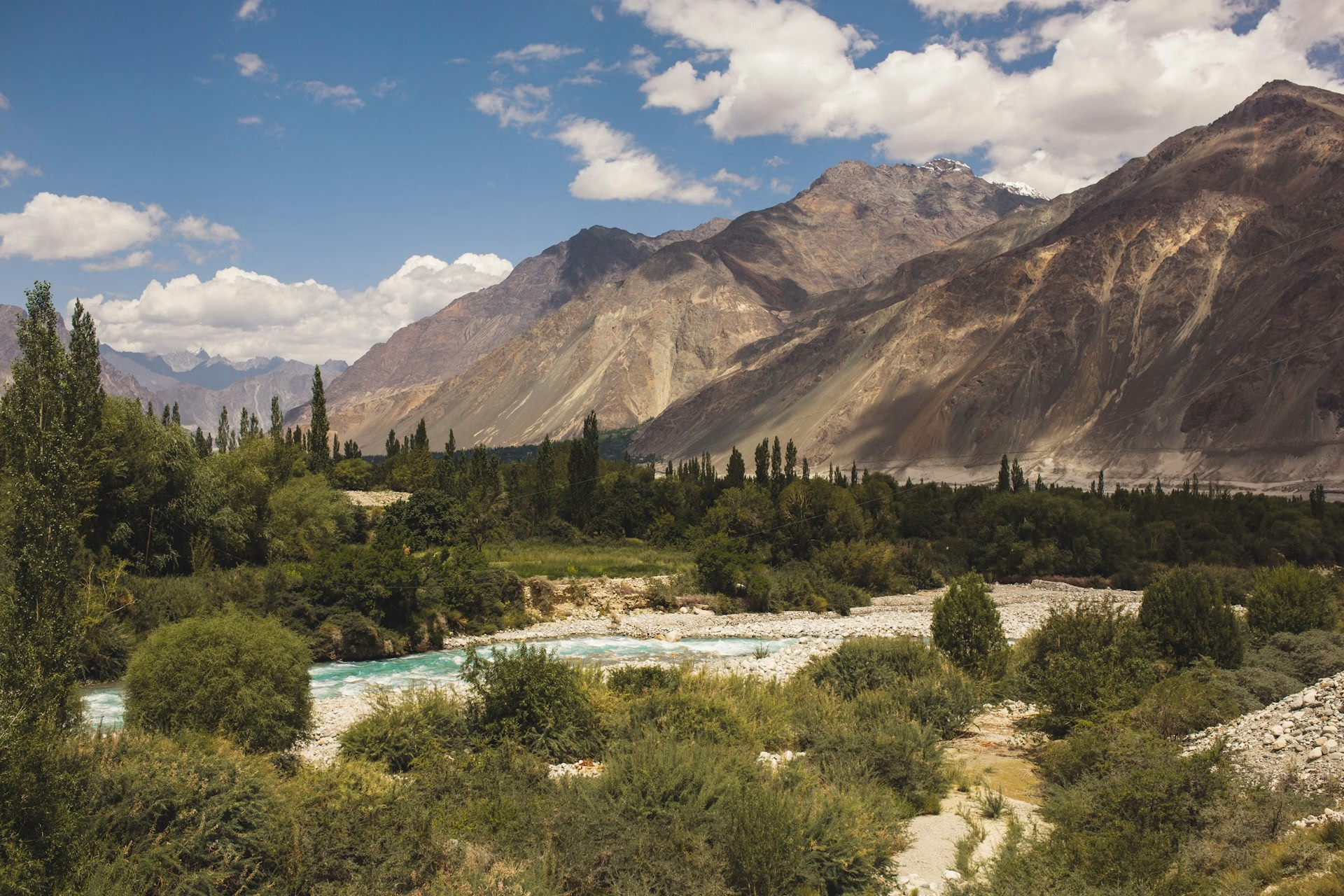
Dist: 160 km (to and fro) | Altitude: 3048 m to 3001 m
After breakfast, you will head off to Turtuk early in the morning, about 85 kilometres away. You will have plenty of time to explore this charming village, known for its Balti culture, apricot orchards, and warm hospitality. In the evening, you will drive back to Nubra.
Meals: Breakfast, Dinner
Night: Stay at a hotel/homestay in Hunder, Nubra Valley
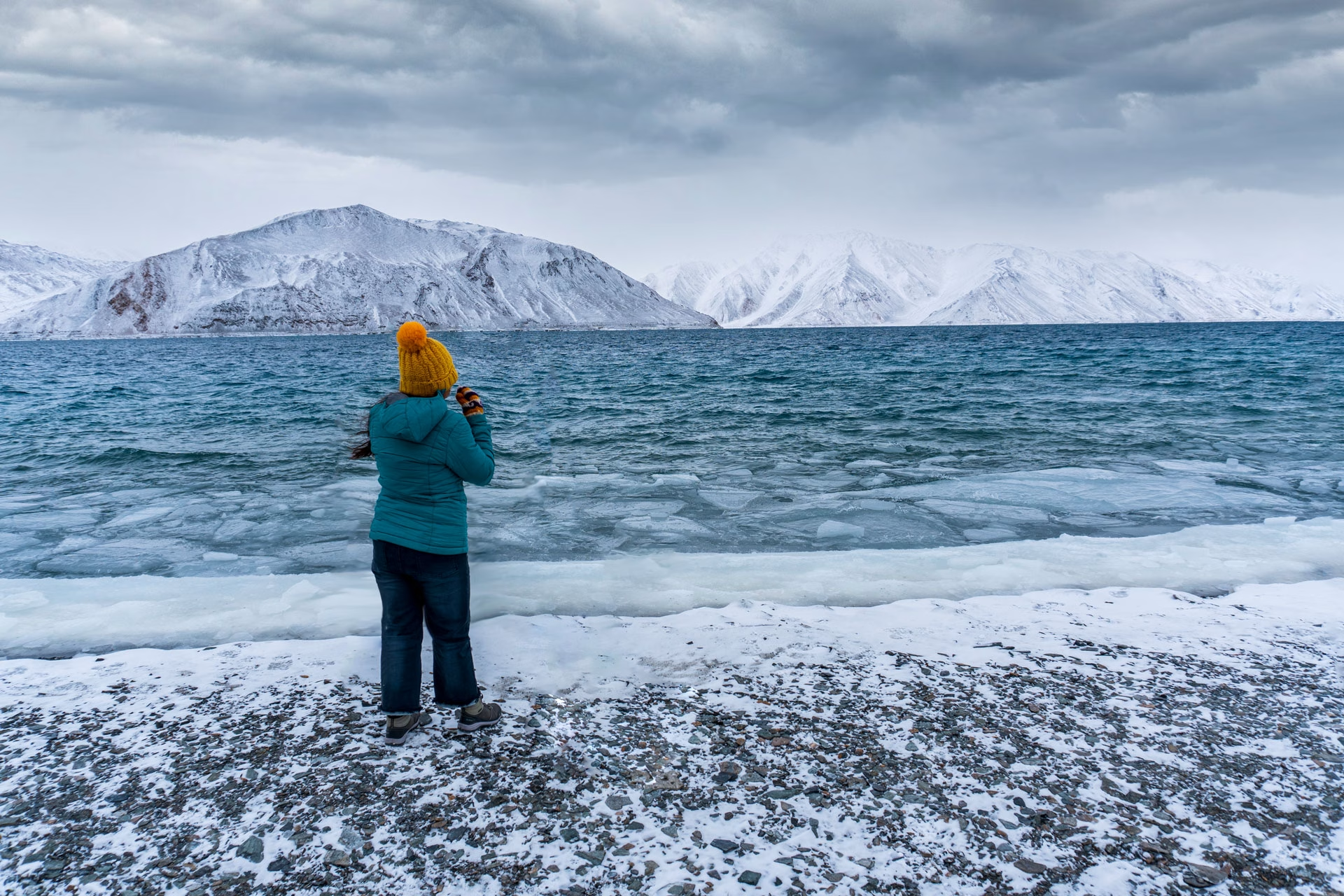
Dist: 200 km | Altitude: 3001 m to 4814 m
After waking up to the breathtaking views of the Karakoram mountains and enjoying a hearty breakfast, you will set out for Pangong Tso, the famous high-altitude saltwater lake known for its ever-changing shades of blue. On the way, you will pass through the scenic villages of Shayok, Durbuk, and Tangtse.
Meals: Breakfast, Dinner
Night: Stay at the cottage/camps in Pangong Tso
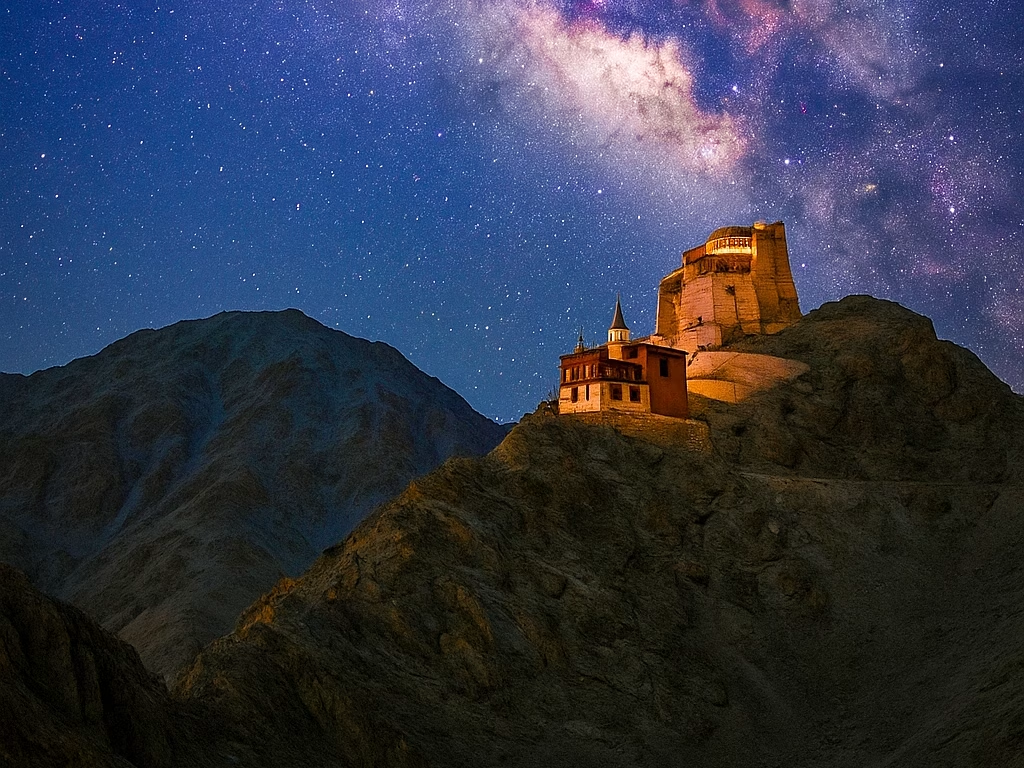
Dist: 309 km | Altitude: 4814 m to 5798 m
After breakfast, you will drive towards Hanle via Saga La Pass. Enjoy the scenic drive through remote high-altitude landscapes before checking into your accommodation in Hanle by evening.
Meals: Breakfast, Dinner
Night: Stay at the homestay/Hotel in Hanle
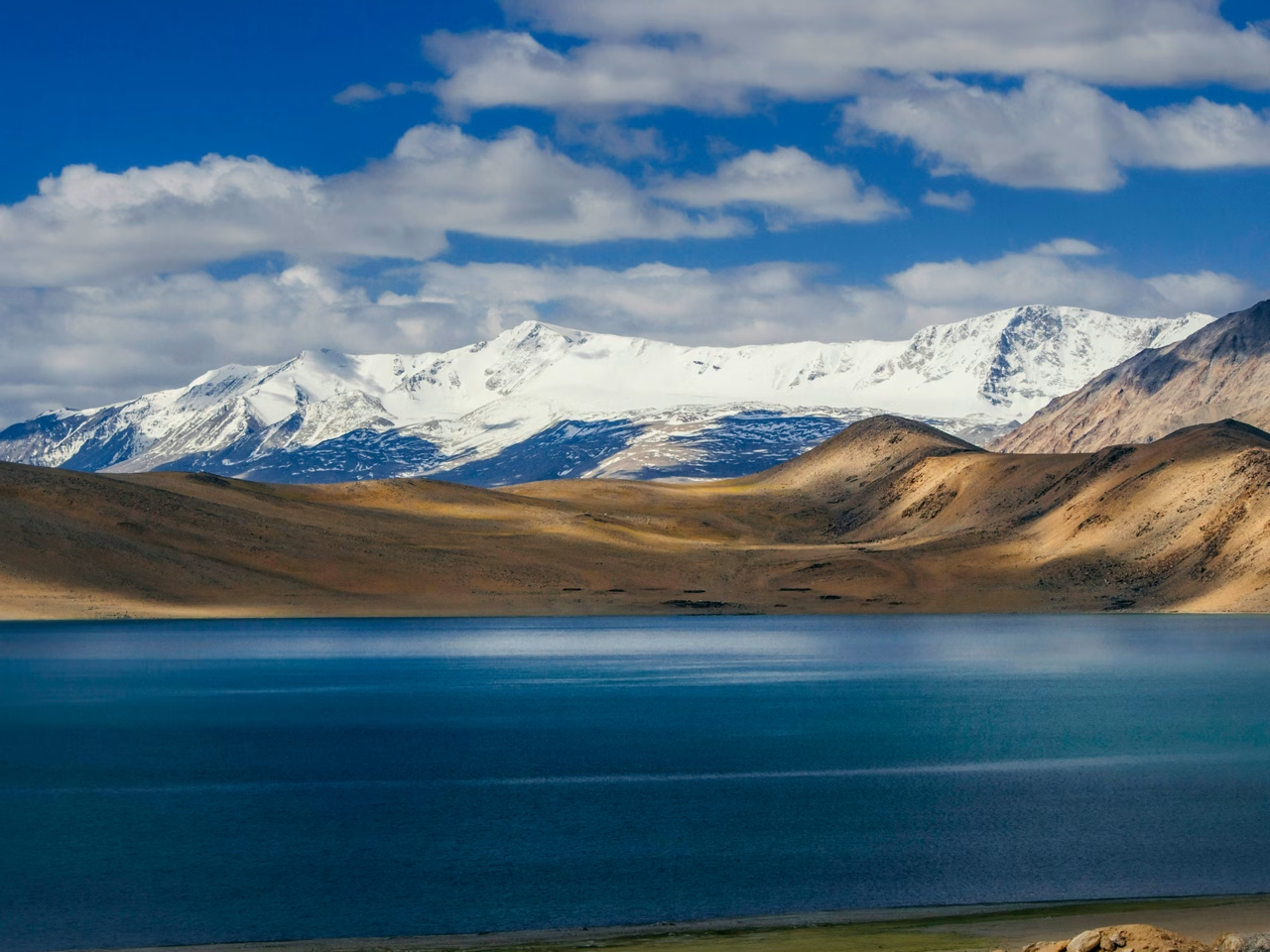
Dist: 170 km | Altitude: 4814 m to 4522 m
After breakfast, you will head towards Tso Moriri, visiting Tsaga La, Nyoma Village, and Mahe Bridge on the way. Once you arrive, you will check into your accommodation near the lake and enjoy a peaceful evening surrounded by nature.
Meals: Breakfast, Dinner
Night: Stay at camp in Tso Moriri
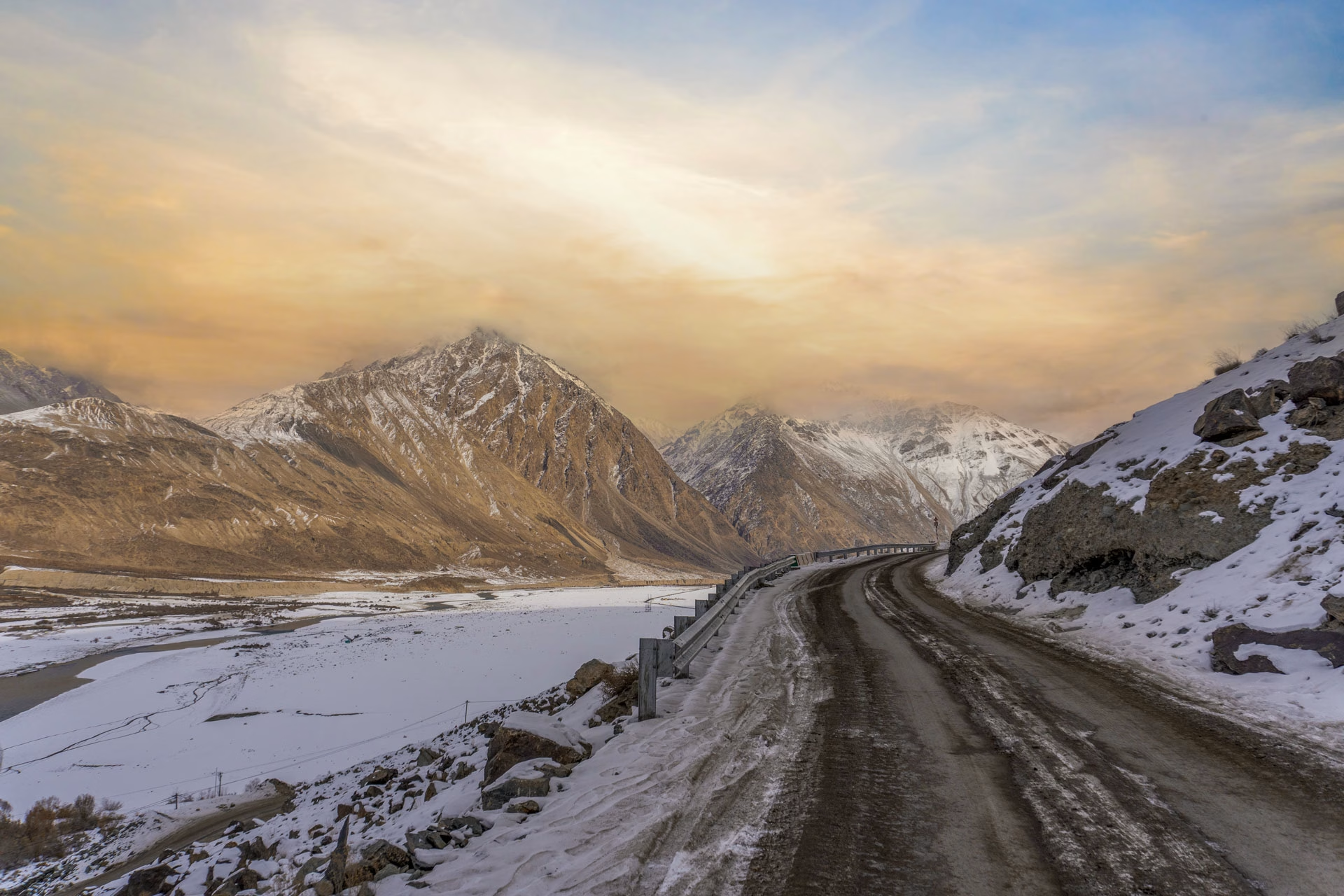
Dist: 233 km | Altitude: 4522 m to 3500 m
Wake up to a beautiful morning at Tso Moriri. After breakfast, you will begin your journey back to Leh, stopping at Tso Kar Lake, Puga Hot Springs, Puga Village, Tanglang La Pass, Thiksey Monastery, Rancho School, and Shey Palace. In the evening, you will arrive in Leh and check into your hotel.
Meals: Breakfast, Dinner
Night: Stay at the hotel in Leh
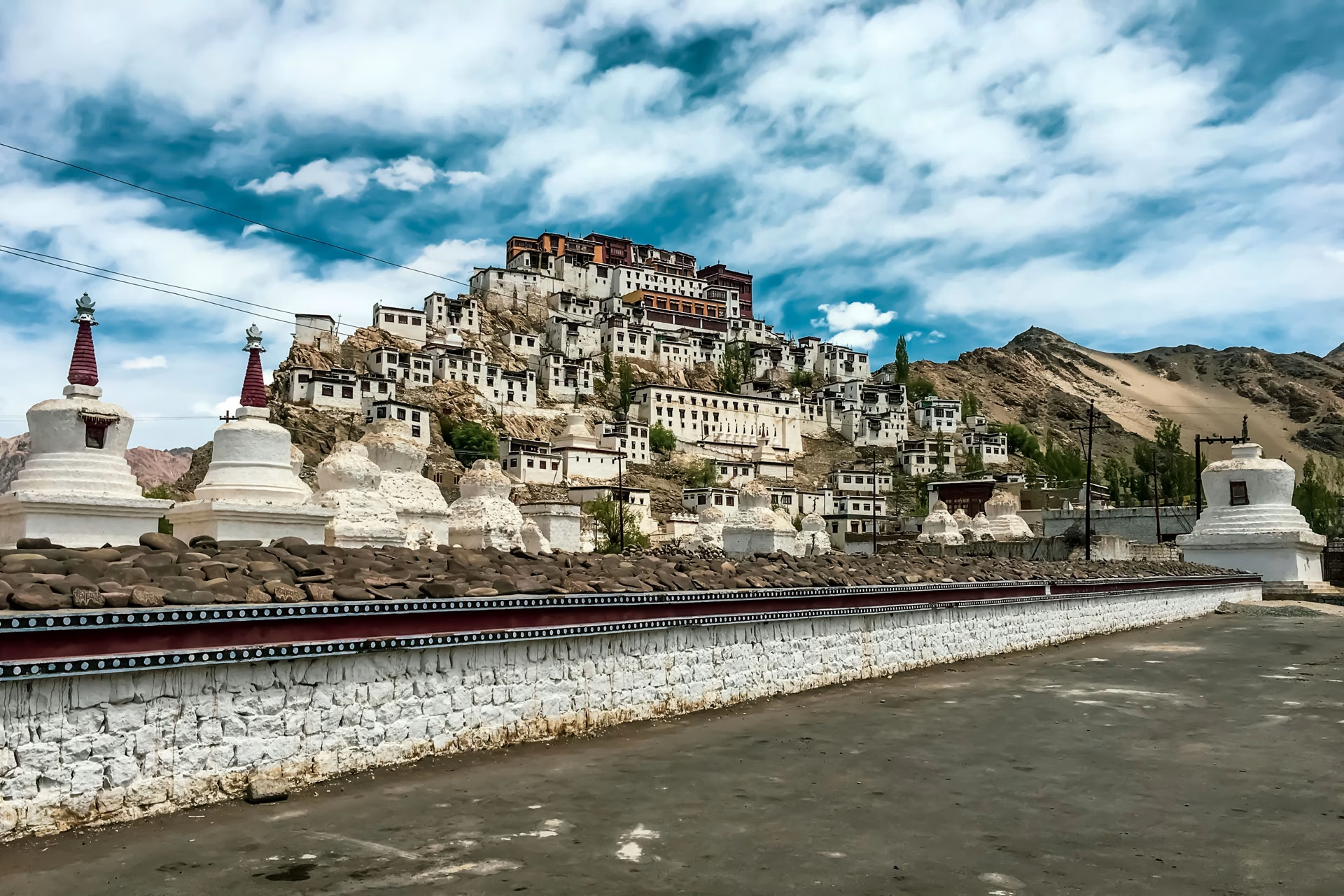
Dist: 210 km | Altitude: 3500m to 4088 m to 2757 m
After breakfast, you will travel towards Kargil. Along the way, you will visit the Hall of Fame, Spituk Monastery, Gurudwara Pathar Sahib, Magnetic Hill, Sangam, and Rafting Point. In the evening, you will reach Kargil and check into your hotel.
Meals: Breakfast, Dinner
Night: Stay at the hotel in Kargil
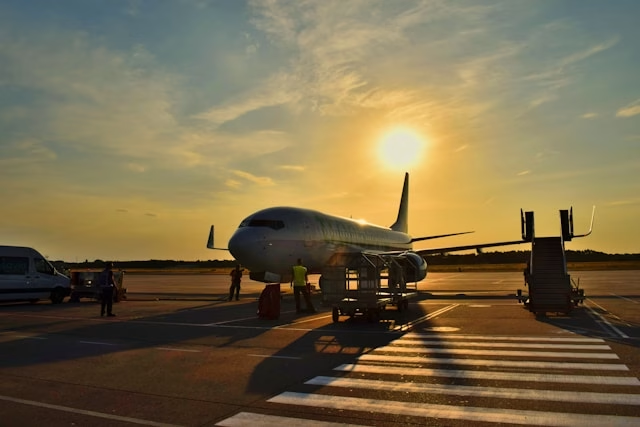
Checkout:10:00 am
After breakfast, you will leave for Srinagar. As you drive through the stunning mountain landscapes, you will carry with you countless memories of this incredible journey through Ladakh.
Meals: Breakfast
Night: Nil
Location | Places to visit |
Leh | Hall of the fame War memorial, Shey Monastery, Thiksey Monastery, Shanti Stupa, Leh Palace, Leh Market, Gurudwara Patthar Sahib, Magnetic Hill, Rafting Point. |
Nubra | Khardung La, Diskit Village, Diskit Monastery, Sand Dunes, Camel Ride Point, Hunder, Shyok River. |
Turtuk | K2 Ranges, Turtuk Village, Balti Culture |
Pangong Tso | Shayok, Durbuk, Tangsay Village, Pangong Lake, Chang la Pass. |
Hanle | Tsaka LA, Hanle Monastery, Hanle Observatory, Hanle Valley, Hanle Lake |
Tso Moriri | Korzok monastery, a Buddhist monastery in Korzok village, the Tsomoriri Lake viewpoint |
Kargil | Spituk Monastery, Gurudwara, Magnetic Hill, Sangam, |
Note:
Leh
Semi Deluxe | Borgo Villa, Jeevanam Villa |
Deluxe | Nature’s Land, Hotel Lalingkha, Hotel Bluestone, Mahey Retreat, Maple Ladakh |
Super Deluxe | Himalayan Retreat Karzoo, Hotel Spa, Charu Palace, The Kaal |
Nubra
Semi Deluxe | Nubra Boutique Camp, Royal Mount, Pika Camp, Weeping Willow Camp |
Deluxe | Paramount Camp, Ladakh Elysium Camp, Urth Home Boutique |
Super Deluxe | Paramount Super Deluxe, Urth Home Boutique |
Pangong
Semi Deluxe | White Heaven Cottage, Mystic Mountain Cottage, Native Retreat Cottage |
Deluxe | Zamta View Point, Native Retreat Cottage, Star Sherathon Cottage |
Super Deluxe | Snowpine Wooden Cottage, Gongma Residency, Polarise Cottage |
Hanle
Semi Deluxe | Padma Homestay, Ama Cottage |
Deluxe | Padma Homestay, Umlingla Residency |
Super Deluxe | Umlingla Residency, Royal Rebo |
Tso Moriri
Semi Deluxe | Tsomoriri Guest House, Tsomoriri Inn |
Deluxe | Tsomoriri Guest House, Tsomoriri Inn, Tsomoriri Guest House, Dorjay Khangsar, Yumchen Cottage |
Super Deluxe | Grand Dolphine, Wisdom House |
Kargil
Semi Deluxe | Jan Palace, Hotel Jazeera Hangout, Hotel Greenland |
Deluxe | Hotel Rangyul, Hotel Siachen |
Super Deluxe | Royal Gasho, Zojila Residency |
We understand that plans can change, but the booking amount is non-refundable due to the costs we incur in preparing for your tour or activity. If you wish to reschedule for a different date, we'll adjust it to the same package, providing you with the necessary flexibility.
If you have paid the total amount but cancelled the package. You will be provided with a refund, as mentioned below:
Tours or activities may be cancelled due to unforeseen events beyond our control, such as weather conditions like heavy rain or storms, or government restrictions like sudden closures of specific areas. In such a scenario, we will provide an alternate tour or activity. However, no refunds will be provided.
Ladakh is a cold mountain desert with a fragile ecology, capable of supporting limited development due to its unique terrain and climate. Formerly part of Jammu & Kashmir, Ladakh’s strategic location on India’s frontier with China necessitates a significant military presence. In 2019, Ladakh was separated from Jammu & Kashmir and designated a Union Territory.
Geography & Climate of Leh
Leh, the main town in Ladakh, is situated in the trans-Himalayas at an altitude between 3,310 m and 3,915 m. Its terrain is sloped, with steep areas in the Snemoling and Skampari wards. Leh experiences a cold desert climate, with winter temperatures falling to as low as -13°C (a record low of -28.3°C), while summers are sunny with cool evenings. The region receives minimal annual rainfall (102 mm), though flash floods and mudslides in 2010 caused significant damage.
Connectivity
Leh is accessible via National Highway 1, connecting to Srinagar and the Leh-Manali Highway (both open from May to November). The town’s Kushok Bakula Rinpoche Airport offers flights to major Indian cities, including Delhi, Srinagar, Jammu, and Mumbai. However, there is no rail connectivity to Leh.
Brief History of Ladakh
Ladakh has been inhabited since Neolithic times, with evidence of its early settlement. Around the 1st century CE, it became part of the Kushan Empire, and by the 2nd century, Buddhism arrived from Kashmir. In the 8th century, Tibetan control was established, although the local population was non-Tibetan. Nyima-Gon founded the first Ladakhi dynasty in the 9th century, and the Namgyal dynasty ruled from the 10th to the 19th century. In the 17th century, Sengge Namgyal established the royal seat at Leh Palace. Ladakh was incorporated into the Dogra state of Jammu and Kashmir in the 19th century.
Buddhism remains the predominant religion, followed by Islam, Hinduism, and Christianity. Ladakh was historically a key point on trade routes connecting Punjab, Kashmir, Tibet, and Baltistan, influencing its architecture and culture. However, its mountainous isolation limited exposure to cultural and technological advancements. Motorised vehicles were first seen in Ladakh with Indian Air Force planes after India’s independence in 1947.
Kargil: A Journey of Adventure, History, and Culture
Kargil offers an enriching experience, blending history, adventure, and local culture. Known for its role in the 1999 Kargil War, it is a destination for history lovers, nature enthusiasts, and thrill-seekers. You can explore ancient monasteries, trek rugged landscapes, and engage in the region’s vibrant culture. And the best part? It can all be done affordably with the right travel tips, including budget accommodations, local eateries, and hidden gems.
Getting to Kargil
By Air: The closest airport is Leh Kushok Bakula Rimpochee, about 220 km from Kargil. You can take a taxi or bus to Kargil, which takes 6-7 hours.
By Road: Kargil is accessible from Srinagar (230 km) and Leh (220 km) via regular buses or private taxis. Travel time from Srinagar is around 8-9 hours, and 6-7 hours from Leh.
Best Time to Visit
The ideal time to visit Kargil is from May to September when temperatures are mild (10°C to 25°C), perfect for outdoor activities. Winters (November to February) can be harsh, with temperatures plummeting below -20°C, but winter sports and the region’s winter charm also attract visitors during this season.
Top Attractions in Kargil
Kargil to Leh Routes
There are two routes from Kargil to Leh, both covering similar distances but with different travel times:
Kargil to Leh Bus & Taxi Services
The Road from Leh to Nubra Valley
The journey from Leh to Nubra Valley is a must-do for those visiting Ladakh, though it requires a special permit for foreigners, which can be challenging if you travel solo. The road covers about 115 km and takes 5-6 hours, passing over the famous Khardung La Pass, the most elevated motorable road in the world at 5,600 meters. The journey offers breathtaking views, but the narrow, winding roads can be unnerving, especially for those uncomfortable with heights.
At the top of Khardung La, travellers can enjoy chai, take pictures by the iconic signs, and admire the fluttering Tibetan prayer flags. As you descend, the scenic Nubra Valley comes into view, with the Shyok River flowing through sand, mud, and water. Upon crossing the river, the village of Sumur awaits, known for its lower altitude (3,100m) and ease of breathing compared to Leh.
Sumur is an excellent base for exploring the valley. It has a small monastery, a centuries-old traditional Ladakhi house, and adventure options. Nearby, Diskit Monastery offers more stunning views. Visitors can also explore the desert-like dunes by buggy or ride rare Bactrian camels, one of the few places where these two-humped camels still roam.
The distance from Leh to Kargil is approximately 220 km, and it takes about 4-5 hours by road, depending on speed and road conditions. With brief detours, the main attractions on the route from Kargil to Leh include the Hall of Fame in Leh, Nubra Valley, and the confluence of the Indus and Zanskar rivers. Other notable stops are Leh Palace, Magnetic Hill, and the Hunder Sand Dunes.
The distance from Srinagar to Nubra Valley is approximately 150 km, but the journey involves more than a straightforward drive. Travellers typically take a scenic route that includes crossing the famous Khardung La Pass, which adds to the travel experience.
Day 1: Arrival in Leh
You will be picked up from Leh Airport, checked into the hotel, and then taken to Leh Palace, Shanti Stupa, and Leh Market.
Day 2: Leh Local Sightseeing
Explore the Hall of Fame, Spituk Monastery, Gurudwara, Magnetic Hill, Sangam, and Rafting Point.
Day 3: Leh to Nubra Valley
Travel via Khardung La Pass and visit Diskit Monastery, Hunder Village, Sandunes, and Camel Ride Point.
Day 4: Nubra to Turtuk
Take a day trip to Turtuk, hike to a waterfall with views of K-2, and then return to Nubra.
Day 5: Nubra Valley to Pangong
Early morning departure to Pangong Tso.
Day 6: Pangong to Hanle
Drive to Hanle via Saga La Pass and check into the accommodation.
Day 7: Hanle to Tso Moriri
Visit Tsaga La, Nyuma Village, and Mahe Bridge, then check in at Tso Moriri.
Day 8: Tso Moriri to Leh
Visit Tso Kar Lake, Puga Hot Spring, and other sites before returning to Leh.
Day 9: Leh to Kargil
Travel to Kargil and visit several attractions en route.
Day 10: Depart for Srinagar
Departure to Srinagar after breakfast.
The best time to visit Kargil is from April to June in the summer. This period offers favourable climatic conditions, making it ideal for travellers.
Pangong Lake, at an altitude of nearly 4,350 meters, is the world's highest saltwater lake. Its striking blue waters beautifully contrast with the arid mountains surrounding it. Spanning about 160 kilometres, one-third of the lake lies in India, while two-thirds are in China, enhancing its scenic grandeur.
Pangong Lake is renowned for its mesmerising ability to change colours, ranging from light green to crystal blue and even golden, red, and pink. This phenomenon is attributed to the changing sky colour and light refraction at high altitudes.
Hanle is renowned for housing the Indian Astronomical Observatory, strategically located near the Tibetan/Chinese border. It features the Himalayan Chandra Telescope, a 2-meter gamma-ray telescope, making it a significant site for astronomical research.
A permit is required to visit Hanle, as it is located in a sensitive area near the Tibetan/Chinese border. The Inner Line Permit is needed for specific areas, including Hanle and others like Nubra Valley and Pangong Tso.
You can see the Milky Way from Hanle, particularly in the Hanle Dark Sky Reserve. This area offers stunning views of the starry skies and is one of the most popular tourist destinations in Leh Ladakh for stargazing.
Hanle is situated at an impressive altitude of approximately 4,300 meters, making it one of the highest inhabited villages in the world, nestled in the Indian Himalayas within Ladakh.
Leave a review